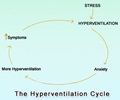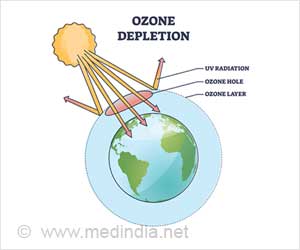A study posted online suggest that individuals who suffer from heat stroke are likely to die after hospitalization if they are on the low blood pressure medication or are living in the nursing home
A study posted online suggest that individuals who suffer from heat stroke are likely to die after hospitalization if they are on the low blood pressure medication or are living in the nursing home for a considerable period of time.
Being confined to bed, not able to leave home daily or being unable to care for oneself are all added causes for death in such patients. Meta-analysis examines all factors that lead the death in heat stroke patients.A severe heat wave struck Europe in 2003, with death toll estimates ranging from 22,000 to more than 70,000, according to background information in the articles. France alone had 14,800 deaths in a nine-day period, one-third of which were caused by heatstroke.
“Heatstroke is the most severe heat-related illness and is defined by an elevated core body temperature above 40 degrees Celsius [104 degrees Fahrenheit], associated with central nervous system abnormalities,” the authors write. Unlike exertional heatstroke, which occurs during strenuous exercise, classic heatstroke results directly from exposure to high temperature.
During heat waves, most victims are found dead at home, and 60 percent of those who reach the hospital are likely to die.
Laurent Argaud, M.D., Ph.D., of Hospices Civils de Lyon and University Claude Bernard Lyon I, and colleagues evaluated survival rates and long-term outcomes of 83 patients hospitalized for heatstroke in Lyon, France, during the summer of 2003. Demographic, medical and functional data were collected when individuals entered the hospital, and they were assessed again after 28 days and one and two years.
Fifty-eight percent of patients died within 28 days. Patients who died:
Advertisement
• were more likely to have used antihypertensive medications long-term. (33 of 48 who died vs. 13 of 35 survivors)
• had a higher average body temperature on hospital admission. (41.3 degrees Celsius/106.3 degrees Fahrenheit compared with 40.7 degrees Celsius/105.3 degrees Fahrenheit)
• had more respiratory, cardiovascular or kidney dysfunctions than survivors.
• were more likely to come to the hospital in a coma (39 or 81 percent of non-survivors vs. eight or 23 percent of survivors) or to have anuria, the inability to form urine. (19 vs. zero)
A total of 27 patients (33 percent) were alive after one year and 24 (29 percent) were alive after two years. “Functional outcome at one year revealed that six patients (22 percent), who lived at home before the heat wave, required care in institutions for elderly patients because of severe functional limitations,” the authors write. “Similarly, a dramatic alteration in functional status was recorded in most surviving patients.”
Advertisement
In the meta-analysis, Abderrezak Bouchama, M.D., of the King Faisal Specialist Hospital and Research Center, Riyadh, Saudi Arabia, and colleagues identified six studies published through 2006 that included 1,065 heat wave–related deaths. All of the studies selected compared risk factors between those who died during heat waves and a control group of those who did not.
“Being confined to bed, not leaving home daily and being unable to care for oneself were associated with the highest risk of death during heat waves,” the authors write.
“Pre-existing psychiatric illness tripled the risk of death, followed by cardiovascular and pulmonary illness. Working home air-conditioning, visiting cool environments and increasing social contact were strongly associated with better outcomes. Taking extra showers or baths and using fans were associated with a trend toward lower risk of death.”
Although further studies are needed to provide specific guidance on each intervention, such as fans and air-conditioning, these results “could help formulate recommendations for the prevention of heat wave–related mortality and morbidity,” the authors conclude
Source-Eurekalert
BIN/J











